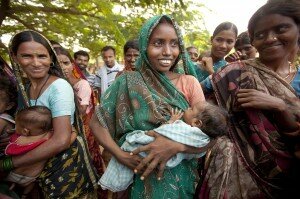
Melinda Gates recently published an opinion piece on Huffington Post that shares different visions by a number of international female leaders aspiring to improve standards for women and girls by 2030. In 2000, the UN created eight international development goals under the Millennium Development Goals (MGDs) to be achieved by 2015. Aside from the fact that these goals will radically improve global standards and reduce the interdependence of poverty-stricken populations, the collaborative effect of all these goals will significantly increase gender inclusion and equality.
Let’s focus on a particular goal – for instance, MDG 6: combating HIV/AIDS, malaria and other diseases. If we continue to break that down to controlling and eliminating NTDs specifically, we are enabling an entire generation of women to pursue academic aspirations without the resistance of deteriorating health standards; we are enabling mothers to use their energy to spend time raising their family; we are enabling reducing the gender gap by proving that a woman is capable of taking part in physical labor to earn for her family. If we lay out the eight MDGs, we can easily see the correlation that the end of NTDs has for women.
Fighting NTDs aligns with fighting poverty by allowing women to rise up the ladder – academically, physically and socially, while improving global health standards. Increasing awareness about NTDs and their treatment methods on its own acts as an educational lesson, improving universal education through access and capacity. Women can act as global leaders in improving the health standards within their own communities. This leadership also stimulates the need for attaining higher education to encourage women to enter the workforce. As they climb further through their academic career, they will learn more ways to create better sustainable environments for their communities to avoid the spread of more diseases. One way, for example, may be to have access to better tools that would ensure cleaner water. Women will be empowered to take the initiative by reaching out to the global community to get a hold of these resources.
The fascinating fact about the MDGs is that they don’t work in isolation – achieving a single goal has a domino effect on the remaining seven. While working to bring an end to NTDs may be a goal aimed at abridging MDG 6, it continues to carry significant weight over achieving the end of poverty and improving global health, sustainable environments, gender equality, universal education and global partnerships.
As Melinda Gates captured through her piece by envisioning the conversation of women’s role in the year 2030, I would also like to offer my voice in the spirit of conversation. My hope is that by 2030, women are not only given the advantage to circumvent neglected and un-neglected diseases, but that they are able to make better use of their restored health to drive their communities out of poverty and forward into progress.
For more information about the link between NTD control and the MDGs, see the Global Network factsheet here.
